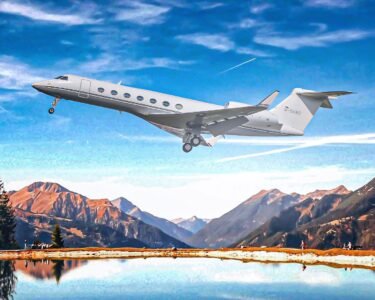Summary
- Fractional ownership allows flexible jet use at lower costs than owning a jet outright.
- The business model is successful with operators like Netjets, which have over 700 aircraft available for use by their clients.
- Shared ownership costs typically start around $350,000 upfront plus $2,000/hour but depend heavily on aircraft type and the negotiations between operators and prospective owners.
- Much like full ownership, it provides tax benefits and security. However, like chartering, it also allows upgrading jet classes or having a replacement aircraft if there suffers technical downtime
Private aviation has numerous perks, most of which allow jet owners or those who charter them out to travel within hours’ notice without the usual hassle of airport security, check-in lines, and relying on set airline schedules. Therefore, It is understandable that high-ranking corporate individuals, athletes, and artists favor them over premium airline products.
On the one hand, altering our jets will allow privacy and enhanced flexibility; it is often the most cost-effective way to experience private aviation. On the other, owning a plane comes with extreme flexibility – you can even choose your livery. It can be costly, with the most popular super-midsize jets costing around $10,000,000 per second hand, according to broker Globalair.com. There is a middle ground, however, called fractional ownership. Today, we shall look at how much this would cost in 2024.
What is fractional ownership, and how is it done?
To better understand how much fractional ownership would cost today, let’s first define what it consists of. We covered this in-depth in a previous article last year in 2023, but let’s review the most critical details again. Fractional ownership is divided into shares, meaning the fraction of the jet you would own. Most operators will offer 1/16, 1/8, 1/4, or 1/2 shares, expressed into flying hours, respectively 50, 100, 200, and 400 hours per year. The ownership term is five years; in the end, you can sell back your jet’s ownership at market value.
Photo : Fasttailwind | Shutterstock
A customer wishing to benefit from such ownership has several options when choosing operators. The most popular is Netjets. This private airline has two main entities, Netjets Europe and Netjets USA. They are widely considered the world’s most considerable fractional ownership by fleet size, with 750 jets. According to their website, customers who own a plane with them get several guarantees, the most important being when the customer’s jet is available, they will provide a similar model or upgrade them to the next jet class at no additional cost.
Other than NetJets, there are different operators like Flexjets in North America and the Middle East, as well as Jetfly in Europe. Another critical benefit relates to taxes, according to Volato, which come with tax benefits similar to full ownership. If purchased for business use, fractional owners can write off all or a portion of the costs as a tax deduction in certain countries.
Ways to fly private:
- Outright ownership
- Fractional ownership
- Jet cards and other membership programs
- Leasing
- Chartering
What are the actual costs of shared ownership?
The actual costs of fractional ownership are private and depend heavily on individual negotiations between the prospective owner and the broker or operator. However, private aviation specialist Stratosjets has explained the approximate costs of this type of ownership. Initially, prospective owners are required to make an upfront payment. This is similar to what is done in cars or housing. It typically costs around $350,000 per person involved. In addition to the upfront fee, jets have several operating costs, corresponding to $2,000 per hour.
Photo: Ceri Breeze | Shutterstock
Considering this industry norm for base ownership in flight hours, which is 50 hours per year, this would amount to an annual operational cost of around $100,000. These baselines depend on the aircraft type. As a reminder, there are several types of private jets available to own and charter:
- Very light jets seat up to four passengers and typically cost around $2,5k an hour to operate – an example is the HondaJet.
- Light jets: seat up to 6 passengers and usually cost around $3k/h to operate – such as the Cessna Citation XLS
- Medium jets: seat up to 12 passengers and typically cost around $4,500/h to operate – such as the Challenger 3500
- Large Jets: seat up to 19 passengers and usually cost around $10,000/h to operate – such as the Global 7500
Each category has increased range, with large jets typically used for transoceanic long-haul flights. These include the Gulfstream G650ER or the Bombardier Global 7500; they are the operator’s flagship aircraft. Medium jets used for transcontinental flights are the most popular, along with light jets. They are the operators’ backbone and comprise most of the worldwide fleet.

Private Jet Operating Costs: A Brief Guide
Related operating expenses include storage, insurance, maintenance, and fuel costs.
Bottom Line
Fractional ownership, also known as shared ownership, is one of the most popular options for using private jets, and this is still valid in 2024. Owning a plane outright can cost tens of millions of dollars, excluding operational costs such as salaries and maintenance. Shared ownership, therefore, offers a more viable alternative for jetsetters wanting the flexibility of charter operations with the benefits of full ownership without the financial burden of the latter.
Photo: Flexjet
With operators like Netjets having recently made a giga-order, it is safe to assume that it also represents a viable business model for operators, meaning the option will remain available for prospective clients for the foreseeable future.
What do you think of fractional ownership? Is it worth it in 2024? Also, what is your favorite business jet and why? Let us know in the comments below.






